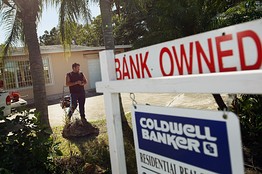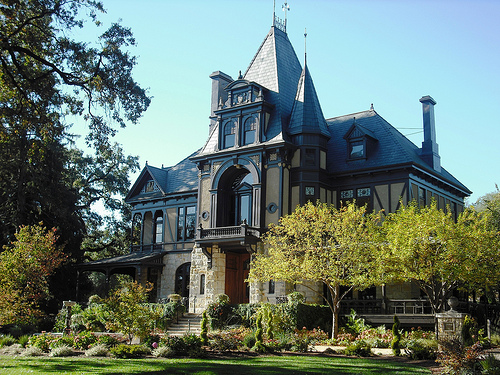
Foreclosures and other distressed properties account for more than a third of all home sales, and data released today suggests that figure may soon grow even bigger.
Lenders in January took back nearly 91,100 distressed properties, which includes foreclosures and short sales, up 29% from the previous month, according to data released this morning by LPS Applied Analytics, which tracks mortgage performance. In the next few months, experts say those homes will make their way back to the market to join the already high percentage of distressed homes being snatched up by buyers.
That addition of distressed properties will likely lead to further drops in home prices, says Tom Popik, research director at Campbell Surveys, a real estate research firm. Foreclosures and short sales accounted for roughly 35% of total existing home sales in January — up 16% from June, according to the National Association of Realtors. Over that period, the median home price fell 8.5% to $154,700. “Prices are going to continue to go down for a long time,” says Popik
To be sure, distressed properties tend to make up a greater share of overall sales in the winter when investors are the predominant buyers, says Walter Molony, a spokesman for the National Association of Realtors. Families typically purchase a home in the spring and summer before the new school year begins. And because families tend to avoid buying foreclosures, distressed properties make up a smaller market share of home sales during that time, he says.
Still, as banks reclaim more foreclosed properties and put them back on the market, experts say homeowners are likely to feel the impact of a nearby foreclosure on their own property’s value. On average, home property values drop about 1% when they’re within one-eighth of a mile from a residence that’s received a foreclosure filing, according to the Woodstock Institute, which researches foreclosures, and the Georgia Institute of Technology. When the home is sold – whether in an auction or taken back by the lender – homes within a quarter mile lose up to around 4% of their value, which they’ll need between two and five years to recoup, according to a separate study in the Journal of Real Estate Finance and Economics.
For homeowners, more foreclosure sales in their neighborhood can lead to losing home equity at a time when millions already owe more on their home than it’s worth. Less equity will make it harder to borrow against homes for renovations, repairs, or other purposes, says Spencer Cowan, vice president at the Woodstock Institute.
Real estate pros say those who want to sell will likely end up getting less for their property than they expected. That’s because they’ll be competing with foreclosed homes that sell at a roughly 29% discount on average, according to RealtyTrac.com. Of course, these homes may stand out to buyers who prefer to buy a move-in ready home or at least one that doesn’t require extensive repairs like most foreclosures do.
What’s bad news for sellers, of course, is good news for buyers. In particular, experts say the spike in foreclosures means buyers have more leverage to negotiate a price on a non-distressed sale if it’s in a market where a significant number of homes are in foreclosure. They may also be able to purchase a foreclosed home at a relatively low price (though they’ll likely have to pump money into it for repairs).
During the last quarter of 2011, foreclosure sales in Las Vegas accounted for 59% of all home sales – among the highest in the country — according to RealtyTrac.com. Those homes sold for an average discount of 19%. In Sacramento, foreclosures made up 50% of all sales and sold at a 25% discount. But while they may get a deal, buyers shouldn’t count on turning a profit quickly especially if foreclosures continue to rise in the area dragging property prices further down.

